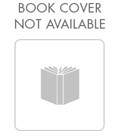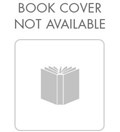Narrow Results By
The Canadian mountain assessment : walking together to enhance the understanding of mountains in Canada
https://archives.whyte.org/en/permalink/catalogue26222
- Medium
- Library - Book (including soft-cover and pamphlets)
- Published Date
- 2023
- Publisher
- Calgary, AB : University of Calgary Press
- Edition
- 2023
- Call Number
- 04 M14c
- Responsibility
- Graham McDowell (Project Lead), Madison Stevens, Shawn Marshall [and 70 others]
- Edition
- 2023
- Publisher
- Calgary, AB : University of Calgary Press
- Published Date
- 2023
- Physical Description
- xvii, 355 pages : illustrations (chiefly colour), color maps ; 28 cm
- Subjects
- Mountains
- Ecology
- Science
- Indigenous People
- Environment
- Abstract
- The Canadian Mountain Assessment provides a first-of-its-kind look at what we know, do not know, and need to know about mountain systems in Canada. The assessment is based on insights from First Nations, Métis, and Inuit knowledges of mountains, as well as findings from an extensive assessment of pertinent academic literature. Its inclusive knowledge co-creation approach brings these multiple forms of evidence together in ways that enhance our collective understanding of mountains in Canada, while also respecting and maintaining the integrity of different knowledge systems. The Canadian Mountain Assessment is a text-based document, but also includes a variety of visual materials as well as access to video recordings of oral knowledges shared by Indigenous individuals from mountain areas in Canada. The assessment is the result of over three years of work, during which time the initiative played an important role in connecting and cultivating relationships between mountain knowledge holders from across Canada. -- Provided by publisher.
- Contents
- 1. Introduction -- 2. Mountain environments -- 3. Mountains as homelands -- 4. Gifts of the mountains -- 5. Mountains under pressure -- 6. Desirable mountain futures.
- Notes
- Staff member Dawn Saunders Dahl contributed to this publication.
- 2022-2023 Lillian Agnes Jones Scholarship Recipient, Kate Hanly contributed to this publication.
- Publication utilized Whyte Museum Archives and Special Collections materials.
- ISBN
- 9781773855097
- Accession Number
- P2024.01
- Call Number
- 04 M14c
- Collection
- Archives Library
This material is presented as originally created; it may contain outdated cultural descriptions and
potentially offensive content.
Read more.
Organizing nature : turning Canada's ecosystems into resources
https://archives.whyte.org/en/permalink/catalogue26201
- Medium
- Library - Book (including soft-cover and pamphlets)
- Published Date
- 2023
- Author
- Biro, Andrew and Cohen, Alice
- Publisher
- Toronto ; Buffalo ; London : University of Toronto Press
- Call Number
- 04 B53o
- Publisher
- Toronto ; Buffalo ; London : University of Toronto Press
- Published Date
- 2023
- Physical Description
- xviii, 264 pages : illustrations, maps ; 24 cm
- Abstract
- Organizing Nature explores how the environment is organized in Canada's resource-dependent economy. The book examines how particular ecosystem components come to be understood as natural resources and how these resources in turn are used to organize life in Canada. In tracing transitions from "ecosystem component" to "resource," this book weaves together the roles that commodification, Indigenous dispossession, and especially a false nature-society binary play in facilitating the conceptual and material construction of resources. Alice Cohen and Andrew Biro present an alternative to this false nature-society binary: one that sees Canadians and their environments in a constant process of making and remaking each other. Through a series of case studies focused on specific resources--fish, forests, carbon, water, land, and life--the book explores six channels through which this remaking occurs: governments, communities, built environments, culture and ideas, economies, and bodies and identities. Ultimately, Organizing Nature encourages readers to think critically about what is at stake when Canadians (re)produce myths about the false separation between Canadian peoples and their environments."-- Provided by publisher.
- Contents
- 1. Introduction -- 1.1 From How to Why -- 1.2 From Ecosystem Components to Resources -- 1.3 Politics beyond Policy -- 1.4 Resourcification through Six Channels -- 1.5 Book Outline and Common Themes -- 2. Channels: From Ecosystem Components to Resources -- 2.1 Introduction -- 2.2 Governments -- 2.3 Communities -- 2.4 Built Environments -- 2.5 Culture and Ideas -- 2.6 Economies -- 2.7 Bodies and Identities -- 2.8 Summary and Conclusions -- 3. From Fish to Fisheries -- 3.1 Introduction -- 3.2 Salmon in British Columbia -- 3.3 Cod in Newfoundland and Labrador -- 3.4 Channels in Action: Organizing Fisheries -- 3.5 Summary and Conclusions -- 4. From Forests to Timber -- 4.1 Introduction -- 4.2 Growth of Timber: Saint John, New Brunswick -- 4.3 Trees, Not Timber: Port Renfrew, British Columbia, and Darkwoods -- 4.4 Channels in Action: Organizing Forests -- 4.5 Summary and Conclusions -- 5. From Carbon to Energy -- 5.1 Introduction -- 5.2 Coal in Nova Scotia -- 5.3 Oil and Bitumen in Alberta -- 5.4 Natural Gas and Fracking -- 5.5 Channels in Action: Organizing Carbon -- 5.6 Summary and Conclusions -- 6. From H2O to Water -- 6.1 Introduction -- 6.2 Diversions and Damming -- 6.2.1 Diversion -- 6.2.2 Damming -- 6.3 Drinking Water -- 6.3.1 Vancouver, 2006 -- 6.3.2 Walkerton, Ontario, 2000 -- 6.3.3 Asubpeechoseewagong Netum Anishinabek-Grassy Narrows, Ontario, 1962-? -- 6.3.4 Drinking Water: Summary -- 6.4 Channels in Action: Organizing Water -- 6.5 Summary and Conclusions -- 7. From Land to Property -- 7.1 Introduction -- 7.2 Soil -- 7.3 Symbol -- 7.4 Space -- 7.5 Channels in Action: Organizing Land -- 7.6 Summary and Conclusions -- 8. From Bodies to Life -- 8.1 Introduction -- 8.2 Wild(?)life: Non-Human Animals -- 8.2.1 Pets and Other Companion Species -- 8.2.2 Fish and Game: Wildness as Economic Resource -- 8.2.3 Parks as Spaces for Wildlife -- 8.3 Human Resources -- 8.3.1 Blood and Plasma -- 8.3.2 Surrogacy -- 8.4 The Channels in Action: Organizing Life -- 8.5 Summary and Conclusions -- 9. Resources: Organized and Organizers -- 9.1 Channels in Action -- 9.2 Common Themes -- 9.2.1 Commodification -- 9.2.2 Indigenous Dispossession -- 9.2.3 Artificial Nature-Society Binary -- 9.3 Why Does 'Resource Thinking' Matter? -- 9.3.1 Winning and Losing -- 9.3.2 Why Is It Important to Think beyond Policy?
- ISBN
- 9781487594848
- Accession Number
- P2023.22
- Call Number
- 04 B53o
- Collection
- Archives Library
This material is presented as originally created; it may contain outdated cultural descriptions and
potentially offensive content.
Read more.


